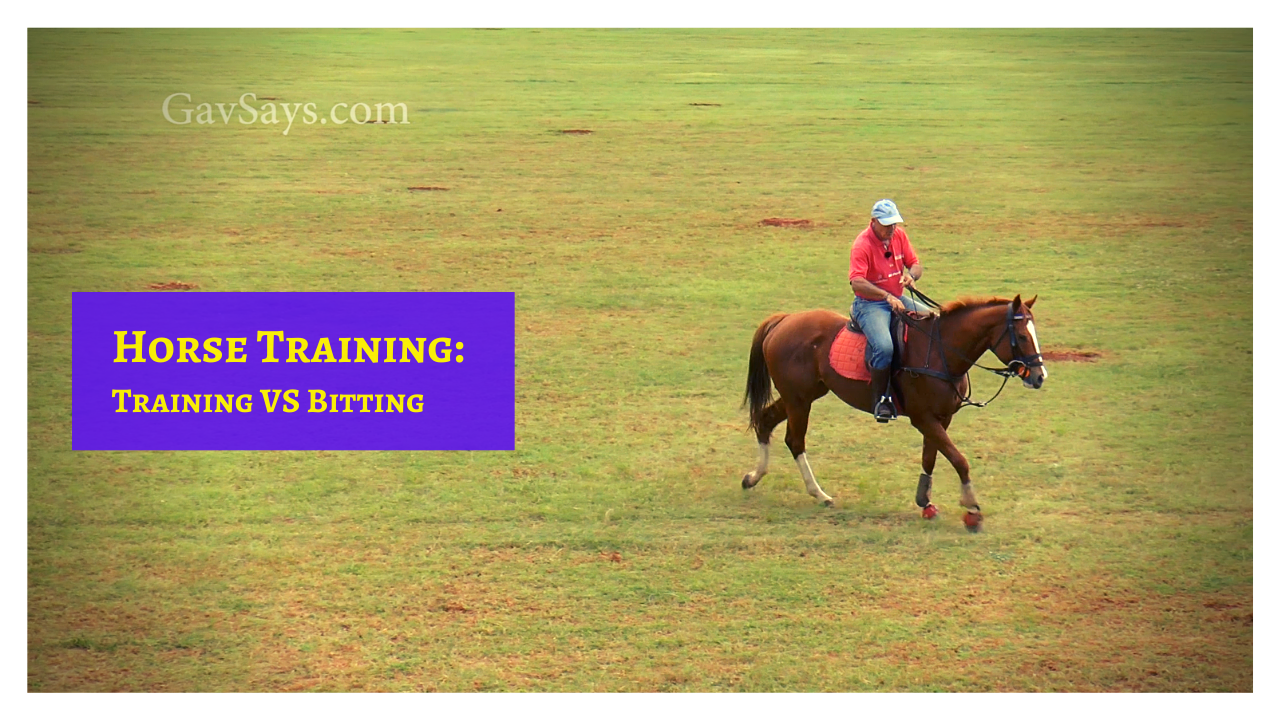Teach your Horse to Stop Correctly
Getting a horse to stop correctly is not just about finding the right bit.
It's about training the horse effectively, and once again the use of legs is crucial.
I'd highly recommend you watch this video till the end. It's a follow on with the same horse from the Horse Training Psychology lesson. You'll also gain some invaluable lessons and tips on the training of a calm and responsive horse.
Enjoy, and be sure to leave your comments and questions down below...
Next: Get the Correct Body Position
Also Watch:
How to get your Horse to Stop Correctly...
Transcript:
Gavin: Okay, so if you've been following the videos you would have seen this horse being schooled, and I talked about it being very skin sensitive, that the Flies were worrying it. It also had a weak side it didn't like the flash nose band.
And we have quietly worked on some of those problems until now she's a far more settled mare. And that's in the space of two to three weeks so now you can see that she's incredibly leg sensitive. If I'm turning my legs I'm hardly touching with the reins. And she was slightly poorer to the right hand side, but now when I turn, you can see that there's no pull on the mouth.
She is very tongue sensitive she is still a little bit racy she's just off the course. So she's not as schooled and not as advanced, is the word I'm looking for, as some of the other horses.
So again, with a horse like this you're gonna take much more time and work her in a completely different way.
This is not about bits, it's about the schooling. So what I'm gonna do with her is make sure that she will drop her head, and give me that head in a side pass, so that she's dropping away from the pressure of the bit. Otherwise it doesn't matter what bit I'm putting in there, she's going to be fighting it.
(01:37) There you can see a lovely little turn off my legs, and here again side pass to the other direction, and also what I do a lot with horses that are a little bit fussy with their face, which she is, is I make them side pass and then turn with their head out the circle like this, so that they drop away from the bit, from any pressure of the bit.
Not only to take the inside rein, and then put the neck rein on, where it's easy for the horse to turn.
So if I'm turning left here I would put my right leg on, take my hand slightly across me, and select pressure backwards, that she is going to turn very easily off my legs. To the other side, head out. This is her weak side, and you can see immediately she battles a little bit more on that.
(02:29) So I work this a lot. But there's the head out the turn, and she's coming off this left leg, and freeing up the right shoulder, which is what I want her to step away on, and push with the outside leg.
Once she's doing that without any change of my hands, if I just changed my legs, look at this horse straight away just makes the turn to the other side.
Let me do that again for you.
Here I am with my right leg and this horse turning here, don't move my hands, put my left leg on, and with hardly a touch of the reins she's going to go to that side.
And I do so much of this work at a walk, at a trot. Now we can start once she's starting to get nice and soft with that, strong with the legs, pick the hands up a little bit because her head is low.
You will see on the gray following, her head is high, so I'll drop my hands to keep the head down.
(03:25) Now when you touch, there's no more fuss with the face anymore and she's really starting at a walk now, to get very easy to back up on a very light touch. She's coming off my legs. And now as I press with my left leg, take my hands slightly across, she will do that roll back.
You've got to teach this stuff as an elementary step, like this, at this speed, before you start to get into Trots and Canter's, and stuff. And start worrying about bits and horses shaking heads and stuff... You've got to teach them how to give to pressure.
(04:10) Strong with my legs, pick my hands up, because she's low, and there you can see she's stopped very nicely. Even sliding a little bit on the slippery grass that I'm on, as she makes the stop.
And... don't blend lessons, get her just to trot, stop and go straight out. And there's the little give of the head. A beautiful little stop with the back side behind her, straight out again and into the next turn.
And from there I can now start to ask once she has got this... There my rains are completely loose, she's not fighting me.
So if she fights me now I know I've got a bitting issue, it's not a schooling issue. Strong legs... Then she's stepping correctly with those front legs. With the front outside leg stepping round the inside front leg, so she doesn't stand on herself.
(05:20) Watch that again: strong legs, touch, and she's giving so beautifully to that touch on the bridle, left leg working, and she's going to turn here.




Comments
Got questions, comments or feedback! Then have your say in the box below...